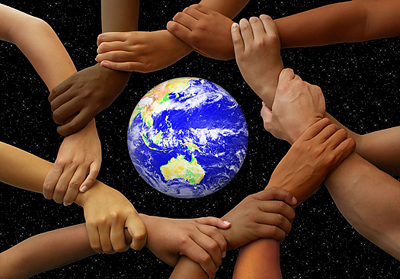 Tom Shadyac seemed to have it all. Tom had a multimillion-dollar career directing Hollywood blockbusters, a 17,000-square-foot mansion, luxury cars, and ability to fly in private jets and more. His life was one that many people could only dream about.
Tom Shadyac seemed to have it all. Tom had a multimillion-dollar career directing Hollywood blockbusters, a 17,000-square-foot mansion, luxury cars, and ability to fly in private jets and more. His life was one that many people could only dream about.However, with the world at his fingertips, and almost anything and everything he wanted or needed in hand Tom admitted that something just did not feel right to him. He explains that he was “standing in the house that my culture had taught me was a measure of the good life," Tom recalls in his documentary I Am and he was "struck with one very clear, very strange feeling: [he] was no happier." He had been feeling this sense of emptiness for quite a while. He had a traumatic bike accident in 2007, and he describes that facing his own death brought an instant sense of clarity and purpose."
It seems that many people if not all when undergoing a very traumatic often a near death experience they begin to question their last words, thoughts, and actions. In Tom’s case after his bike accident he thought to himself that "If [he] was, indeed, going to die..what did [he] want to say before [he] went?” At that moment, Tom explains that It became “very simple and very clear. He wanted to tell people what he had come to know. And what he had come to know was that the world he was living in was a lie."
I found it so interesting that a man who- by our society’s standards- seems to have it all was no happier after having gained all of these “successes.” Tom, in his quest to find what would truly make him happy, he made major changes to his lifestyle. Today, Tom lives in a modest mobile home, bikes to work and flies commercial airlines—and he says he's never been happier.
Upon first hearing this interview, it really had me thinking the same questions that Tom asked.
What's wrong with our world, and what can we do about it?
I believe that a lot of what has to do with what's wrong with our world—and the lie that Tom felt he was living—is our culture's definition of success. We place too much value on getting that certain job, obtaining that certain amount of wealth- all extrinsic models of success. These extrinsic models of success can only bring us temporary forms of happiness, what we strive for and look for as human beings is interaction, cooperation, and passion.
To find out why the world is the way it is, Tom explored the readings of scientists, philosophers, poets and others, and spoke with thought leaders, including Archbishop Desmond Tutu, scientist Dean Radin, researcher Rollin McCraty of the HeartMath Institute, journalist Lynn McTaggart, professor Dacher Keltner of U.C. Berkeley, author Thom Hartmann and more.
What he discovered revolves around three key concepts that are explored in his film I Am:
1. It is scientifically proven that the entire human race is connected.
2. It is human nature to be cooperative rather than competitive.
3. If you don't do what your heart wants you to do and follow your passion, it will destroy you. The most interesting part of the interview came when he revealed the one fundamental law that all of nature obeys that mankind breaks every day:
Nothing in nature takes more than it needs.
That is our problem. In our culture, we see that as a result of the “definition of success” we have adopted and live by every day we as humans often take more than we need by buying large homes, driving expensive cars and living excessively, as Tom did.
By doing this we are elevating these extrinsic models of success that promote this cancerous idea that we have to take everything we can. Tom- chose not to be part of that cancerous cycle and instead be part of the healing. We can all be part of that healing if we lead simpler lives, not purely devoted to obtaining that certain job, or achieving that certain income to buy that certain house or car. We must begin to redefine our definition of success to one that is not purely based on extrinsic goods, and instead to one that brings intrinsic happiness.
I AM was released earlier this year, it's worth taking a look at the trailer.






